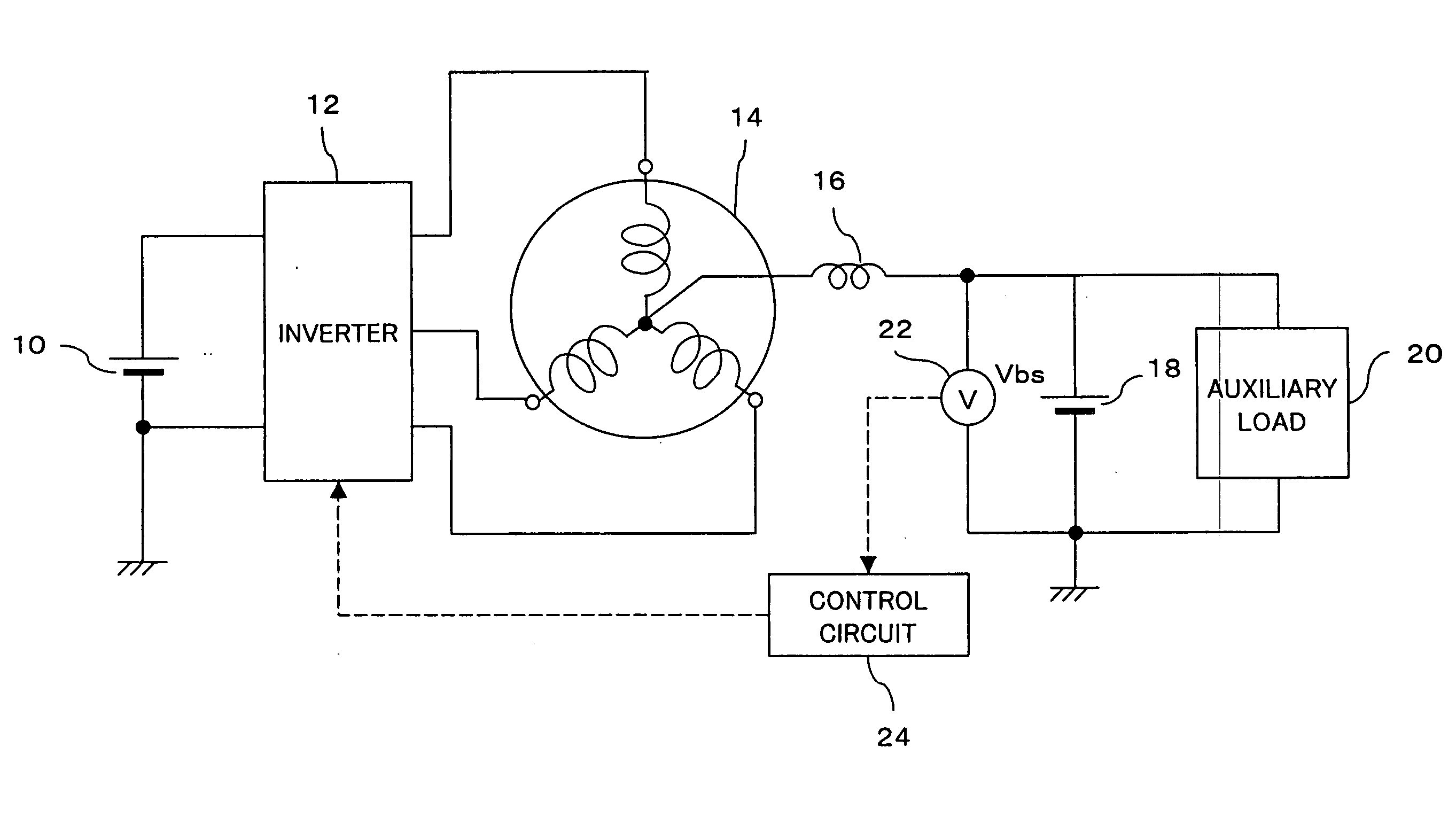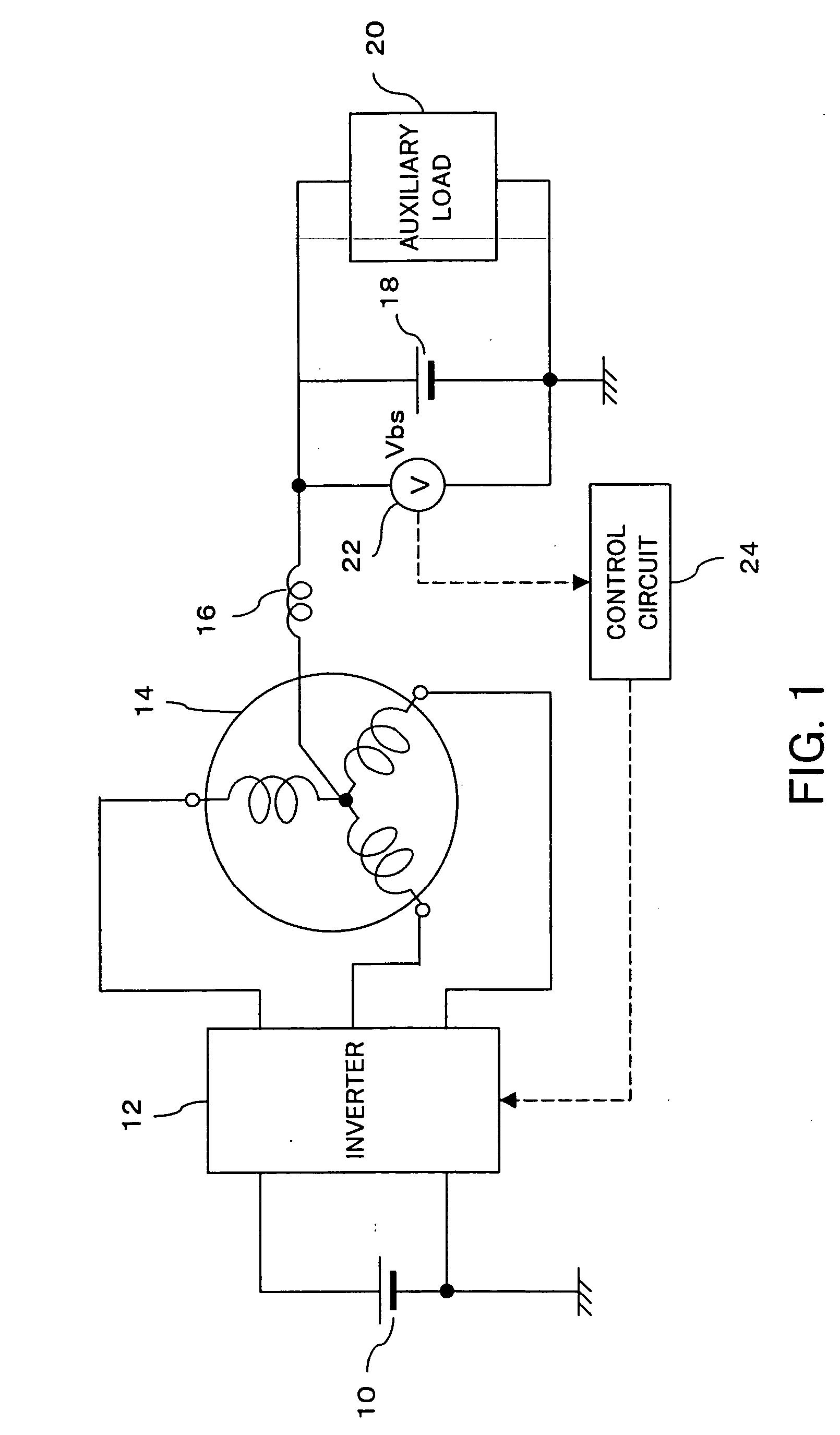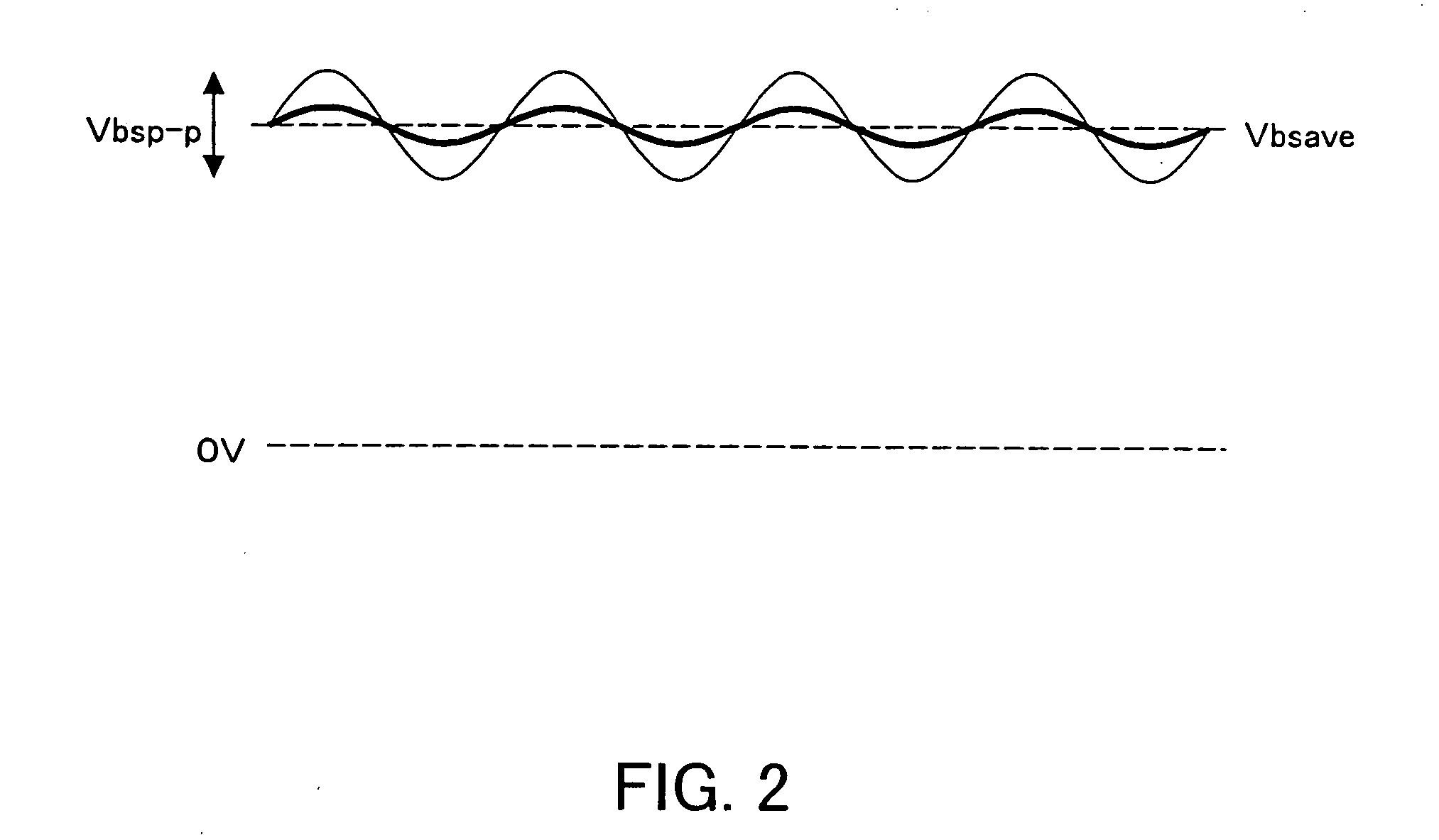Method and system for detecting the disconnection of an auxiliary power suppply from a poly-phase motor
- Summary
- Abstract
- Description
- Claims
- Application Information
AI Technical Summary
Benefits of technology
Problems solved by technology
Method used
Image
Examples
embodiment 1
[0043]FIG. 1 shows the overall configuration of an inverter system for driving a poly-phase motor in accordance with an embodiment of the present invention. An inverter 12 is connected to a 36-volt (42V when charged) battery 10 which serves as a main power supply. Namely, a voltage of 36V output from the battery 10 is applied between a positive bus and a negative bus of the inverter 12.
[0044] The inverter 12 has three arms provided in parallel each including two switching elements (transistors) arranged between the positive bus and the negative bus. The inter-transistor points in the respective arms connect respectively to three phase motor output terminals.
[0045] Three phase motor coil terminals of a three-phase alternating current motor 14 are respectively connected to the three phase motor output terminals of the inverter 12. Accordingly, while one of the upper transistors of the inverter 12 is sequentially turned on, a transistor of other arms is sequentially turned on, so tha...
embodiment 2
[0066]FIG. 7 shows a configuration of the system according to a second embodiment of the present invention. In this embodiment, in addition to the voltmeter 22, an ammeter 26 is provided between the auxiliary battery 18 and the power supply line for detecting current of the auxiliary battery 18 (battery current: Ibs). The output from the ammeter 26 is also supplied to the control circuit 24.
[0067] The control circuit 24 measures values related to abnormality, as shown in FIG. 8. Specifically, it is first determined whether or not there is an abnormality in voltage sensing of the power supply line (14V system power supply line) to which the auxiliary battery 18 is connected (S11). This is determined by determining whether or not the output Vbs of the voltmeter 22 has a normal value. For example, when the output voltage Vbs is 8V or less, the various auxiliary loads cannot be driven normally, and abnormality is determined. In particular, when the voltage Vbs is 0V, it is determined a...
embodiment 3
[0095] Referring to FIG. 14, a system configuration in accordance with a third embodiment is shown. In this embodiment, a resolver 28 is provided for detecting a rotation angle of the motor and the output from the resolver 28 is supplied to the control circuit 24.
[0096] As described above, during normal operation, the control circuit 24 controls switching of the inverter 12 based on the output Vbs of the voltmeter 22 to control the current to be supplied to the motor 14, thereby controlling power generation of the motor 14 such that the voltage Vbs becomes a desired value (14V, for example).
[0097] Specifically, it is possible to control the neutral point voltage by changing an on duty ratio between the upper transistor and the lower transistor of the inverter 12. More specifically, when the ON periods are identical for both transistors, the neutral point voltage is equivalent to inverter input voltage (voltage of the battery 10). On the other hand, when the ON period for the upper...
PUM
 Login to View More
Login to View More Abstract
Description
Claims
Application Information
 Login to View More
Login to View More - R&D
- Intellectual Property
- Life Sciences
- Materials
- Tech Scout
- Unparalleled Data Quality
- Higher Quality Content
- 60% Fewer Hallucinations
Browse by: Latest US Patents, China's latest patents, Technical Efficacy Thesaurus, Application Domain, Technology Topic, Popular Technical Reports.
© 2025 PatSnap. All rights reserved.Legal|Privacy policy|Modern Slavery Act Transparency Statement|Sitemap|About US| Contact US: help@patsnap.com



